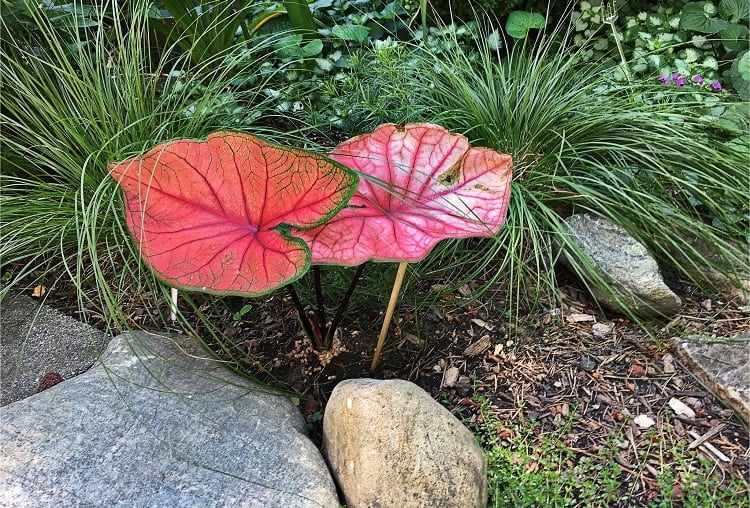Are you tired of spending hours on lawn maintenance? Do you want a beautiful and eco-friendly alternative to traditional turf? Consider clover ground cover as a lush lawn alternative. Clover is a low-maintenance grass substitute that offers several benefits, making it an attractive choice for homeowners. Not only does clover require less water and fewer mowings, but it also doesn’t need frequent fertilizer applications, herbicides, or pesticides. With its ability to fix nitrogen for other plants, clover promotes healthy soil and attracts beneficial insects.
Key Takeaways:
- Clover ground cover is a low-maintenance alternative to traditional turf.
- It requires less water and mowing, saving time and effort.
- Clover fixes nitrogen for other plants, promoting soil health.
- It doesn’t need frequent fertilizers, herbicides, or pesticides.
- Clover attracts beneficial insects, creating a vibrant ecosystem.
The Benefits of Clover Lawns
Clover lawns offer numerous advantages compared to traditional grass lawns. By choosing a clover lawn, you can enjoy the following benefits:
1. Reduced Water Requirements
One of the key benefits of clover lawns is that they require less water than grass lawns. Clover has deep roots that enable it to tap into water sources more effectively, reducing the need for frequent watering.
2. Time and Effort Savings
Clover lawns also require less mowing compared to grass lawns. With slower growth and a smaller mature height, you’ll spend less time and effort maintaining your lawn.
3. Heat Tolerance
Clover is more heat-tolerant than grass, allowing it to stay green and vibrant even during hot summer months. This means you’ll have a beautiful lawn all year round.
4. Natural Nitrogen Fixation
Clover has the unique ability to fix nitrogen. It forms a symbiotic relationship with specific bacteria in its root nodules that convert nitrogen from the air into a usable form for plants. This means that clover lawns don’t require frequent fertilizer applications, as the clover itself provides a natural source of nitrogen for itself and surrounding plants.
5. Weed Suppression and Beneficial Insects
Clover naturally suppresses weeds, reducing the need for herbicides and pesticides. It forms a dense ground cover that competes with weeds for space and resources. Additionally, clover lawns attract beneficial insects, such as bees and butterflies, which contribute to a healthy ecosystem.
6. Affordable Option
When compared to traditional grass lawns, clover lawns are more affordable. Clover seed is relatively inexpensive, making it a cost-effective choice for homeowners.
Types of Clover for Your Lawn
If you’re considering clover as a ground cover for your lawn, there are different types of clover that you can choose from. Each variety has its own unique characteristics and benefits. Let’s explore the options:
1. White Clover
White clover is the most popular variety of clover for lawns in the United States. It is known for its rapid spreading and attractive white flowers. White clover is a low-growing plant that forms a dense carpet and is highly adaptable to various soil conditions. It is also tolerant of drought and can thrive in areas with partial shade.
2. Red Clover
Red clover is another clover variety that can be used as a ground cover in lawns. It features reddish-purple flowers and tends to be taller than white clover. Red clover is a good option for areas with slightly more shade and is often used in wildflower meadows or naturalized areas.
3. Microclover
Microclover is a smaller variety of white clover that has gained popularity in recent years. It has smaller leaves and fewer flowers compared to white clover, making it blend well with other grasses. Microclover is a good choice if you want a more uniform appearance for your lawn and it doesn’t clump easily.
To create an even, green lawn with clover, you can pair each type of clover with different grass species that complement their growth habits and appearance. This combination will provide a lush and vibrant lawn that is both visually appealing and environmentally friendly.
Considerations for a Clover Lawn
Before choosing a clover lawn, there are some factors to consider. Clover lawns have their own unique characteristics and may not be suitable for everyone or every yard. Here are some important considerations to keep in mind:
- Heavy Foot Traffic: Clover lawns are not as resilient as traditional turfgrasses, making them less suitable for areas with heavy foot traffic. If your lawn sees a lot of activity, such as children playing or pets running around, a clover lawn may not hold up well.
- Densely Shaded Areas: While cloves can tolerate some shade, they may not thrive in densely shaded areas. If your yard has a lot of trees or structures that create significant shade, other shade-resistant perennials or grasses might be a better choice.
- Drought-Tolerance: Clover is fairly drought-tolerant, meaning it can withstand periods of limited water availability. However, extremely dry climates with cold temperatures may not be ideal for clover lawns. Consider the local climate and water availability in your area.
- Bee Sting Allergies: Clover is known for attracting pollinators like bees due to its flowers. If you or your family members have bee sting allergies, a clover lawn may not be suitable for your yard. Make sure to prioritize safety and comfort when considering different lawn options.
- Aesthetic Preferences: If you prefer a perfectly manicured and tidy lawn, a clover lawn may not meet your aesthetic preferences. While clover provides a lush and green ground cover, it has a more natural and slightly wild appearance. Consider your personal preferences and the overall look you want to achieve in your yard.
By considering these factors, you can determine if a clover lawn is the right choice for your needs and preferences. Remember that each yard is unique, so it’s important to choose a lawn option that suits your specific circumstances.
Planting and Care for Clover Lawns
Establishing a clover lawn is a simple and rewarding process. Follow these steps to plant and care for your clover lawn:
- Prepare the soil: Start by clearing the area of existing grass, weeds, and debris. This provides a clean and favorable environment for clover growth.
- Check soil pH: Test the soil pH and adjust it if necessary. Clover lawns prefer a slightly acidic to neutral pH range of 6.0 to 7.0.
- Spread the seeds: Evenly distribute the clover seeds over the prepared soil surface. A broadcasting spreader or hand spreader can help achieve an even distribution.
- Rake lightly: Use a garden rake to lightly rake the seeds into the soil. This ensures good seed-to-soil contact, promoting germination.
- Water thoroughly: After planting, water the area thoroughly to help the seeds settle into the soil. Keep the soil moist until germination occurs.
- Maintain moisture: Once the clover lawn has germinated, it’s important to keep the soil consistently moist. Water the lawn once or twice a week, depending on rainfall, to promote healthy growth.
- Choose the right sun exposure: Clover lawns perform best in full to partial sun. Make sure your lawn receives adequate sunlight for optimal growth.
- Mow selectively: Clover lawns have a lower mowing frequency compared to traditional turfgrass. Mow the lawn a few times a year to maintain a height of around 2 to 3 inches.
Carefully following these steps will help you successfully establish and maintain a beautiful clover lawn. Remember to adapt watering and mowing practices based on your local climate and conditions.
Continue reading to discover how clover lawns compare to traditional turf lawns in terms of benefits and drawbacks.
Comparison to Traditional Turf Lawns
Clover lawns offer numerous advantages when compared to traditional turf lawns. One of the key benefits is their reduced water requirements. Clover’s deep root system allows it to absorb and retain moisture more efficiently, resulting in lower irrigation needs. This not only helps conserve water but also reduces the time and effort required for frequent watering.
Another advantage of clover lawns is the minimal mowing they require. Unlike traditional turf lawns that need regular trimming to maintain a manicured appearance, clover lawns grow slowly and stay at a manageable height. This means less time spent on mowing and more time enjoying your lush and vibrant lawn.
Clover also has superior heat tolerance compared to traditional grasses. While conventional turf lawns can struggle with drought and turn brown during the hot summer months, clover remains green and resilient. Its ability to withstand high temperatures and dry conditions makes it an ideal choice for regions with scorching summers.
One of the most enticing aspects of clover lawns is their eco-friendliness. Clover’s nitrogen-fixing ability eliminates the need for frequent fertilization, reducing the use of chemical-based products. Additionally, clover naturally suppresses weeds, reducing the need for herbicides and pesticides. By choosing a clover lawn, you can create a beautiful, lush landscape while minimizing the negative impact on the environment.
Aside from its ecological benefits, clover lawns also attract beneficial insects like bees and butterflies. These pollinators play a crucial role in maintaining biodiversity and supporting the ecosystem. By providing a habitat for them, clover lawns contribute to the overall health and balance of your yard.
However, it’s essential to consider your specific needs and preferences before deciding on a clover lawn. While clover lawns excel in many aspects, they may not be suitable for areas with heavy foot traffic, as clover is not as resilient as traditional grasses. Additionally, densely shaded areas may not provide the optimal conditions for clover to thrive, so alternative shade-resistant plants may be a better choice. Moreover, if you or your family members have bee sting allergies, it’s important to weigh the potential risks and benefits of a clover lawn.
In summary, clover lawns offer several advantages over traditional turf lawns. From reduced water and mowing requirements to heat tolerance and environmental benefits, they provide a greener and more sustainable alternative. By carefully considering your specific needs and preferences, you can make an informed decision and transform your yard into a beautiful and eco-friendly space.
Potential Drawbacks of Clover Lawns
While clover lawns offer numerous benefits, it’s important to consider some potential drawbacks before deciding if it’s the right choice for your yard.
Clover Doesn’t Wear Evenly: Unlike traditional turf lawns, clover doesn’t withstand heavy foot traffic as well. If your yard experiences a lot of activity, such as children playing or pets running around, clover may not be the most suitable option.
Homeowners Association Restrictions: Before planting a clover lawn, it’s essential to check with your homeowners association or local regulations. Some associations may have restrictions or guidelines regarding lawn types, and clover may not be allowed in certain neighborhoods.
Potential Concern for Bee Sting Allergies: While clover’s ability to attract beneficial insects is a positive aspect for many, it can be a drawback for those with bee sting allergies. If you or your family members have allergies, the presence of honeybees in a clover lawn may cause concerns.
Reseeding Needs: Compared to traditional turf lawns, clover lawns may require more frequent reseeding. This additional maintenance task can be a consideration for homeowners who prefer a low-maintenance lawn.
Aesthetic Preference: Lastly, the visual appearance of a clover lawn may not appeal to everyone. If you prefer a neat, manicured look for your yard, or if you have specific aesthetic preferences, a clover lawn may not meet your expectations.
To get a clearer understanding of the potential drawbacks of clover lawns, it’s crucial to evaluate your specific needs, lifestyle, and the requirements of your local environment.
Conclusion
Considering a clover ground cover for your lawn is a smart choice. Not only does it offer an eco-friendly alternative to traditional turf lawns, but it also provides numerous benefits that can transform your yard into a lush and sustainable landscape.
One of the key advantages of clover ground cover is its low-maintenance nature. With reduced water requirements and less frequent mowing, you can save time and effort on lawn care. Additionally, clover is heat-tolerant and doesn’t require regular fertilizers, herbicides, or pesticides, making it a cost-effective and environmentally friendly option.
However, it’s important to consider some limitations when opting for a clover lawn. Areas with heavy foot traffic, densely shaded spots, bee sting allergies, or strict neighborhood rules may not be suitable for clover ground cover. It’s crucial to assess your specific needs and preferences before making a decision.
In conclusion, a clover ground cover can provide an attractive, low-maintenance, and eco-friendly alternative to traditional grass lawns. With its numerous benefits and considerations in mind, you can create a beautiful and sustainable landscape that enhances both the visual appeal and environmental value of your outdoor space.
Is Micro Clover a Better Alternative to Traditional Clover Ground Cover for a Lush Lawn?
Many homeowners are turning to micro clover as a ground cover alternative for a lush lawn. Micro clover lawn pros and cons include its ability to stay green in drought conditions and its low maintenance requirements. However, some may find it too invasive and difficult to control.
FAQ
What are the benefits of choosing a clover lawn?
Clover lawns have several advantages, including reduced water requirements, less frequent mowing, heat tolerance, no need for fertilizers, herbicides, or pesticides, affordability, erosion control, and the attraction of beneficial insects.
What types of clover are suitable for lawns?
There are different types of clover that are suitable for lawns, including white clover, red clover, and microclover. Each type has its own characteristics and can be paired with different grass species to create an even, green lawn.
What factors should I consider before choosing a clover lawn?
There are a few factors to consider before choosing a clover lawn. These include the suitability for heavy foot traffic, the amount of shade in the area, the climate, allergies to bee stings, and personal aesthetic preferences.
How do I plant and care for a clover lawn?
To establish a clover lawn, the soil should be cleared of existing grass, weeds, and debris. The pH of the soil should be checked and adjusted if necessary. Clover seeds should be spread evenly and lightly raked into the soil, followed by thorough watering and keeping the area moist until germination. Once established, clover lawns require minimal maintenance, involving watering once or twice a week and occasional mowing to maintain the desired height.
How do clover lawns compare to traditional turf lawns?
Clover lawns offer several advantages over traditional turf lawns. They require less water and mowing, are more heat-tolerant, don’t require frequent fertilization or the use of herbicides and pesticides, and can attract beneficial insects and provide a habitat for pollinators.
What are the potential drawbacks of clover lawns?
While clover lawns have numerous benefits, there are a few potential drawbacks to consider. These include not being suitable for heavy foot traffic, possible neighborhood restrictions, attraction of honeybees (which can be a concern for individuals with bee sting allergies), and potentially requiring more frequent reseeding compared to traditional turf lawns.











